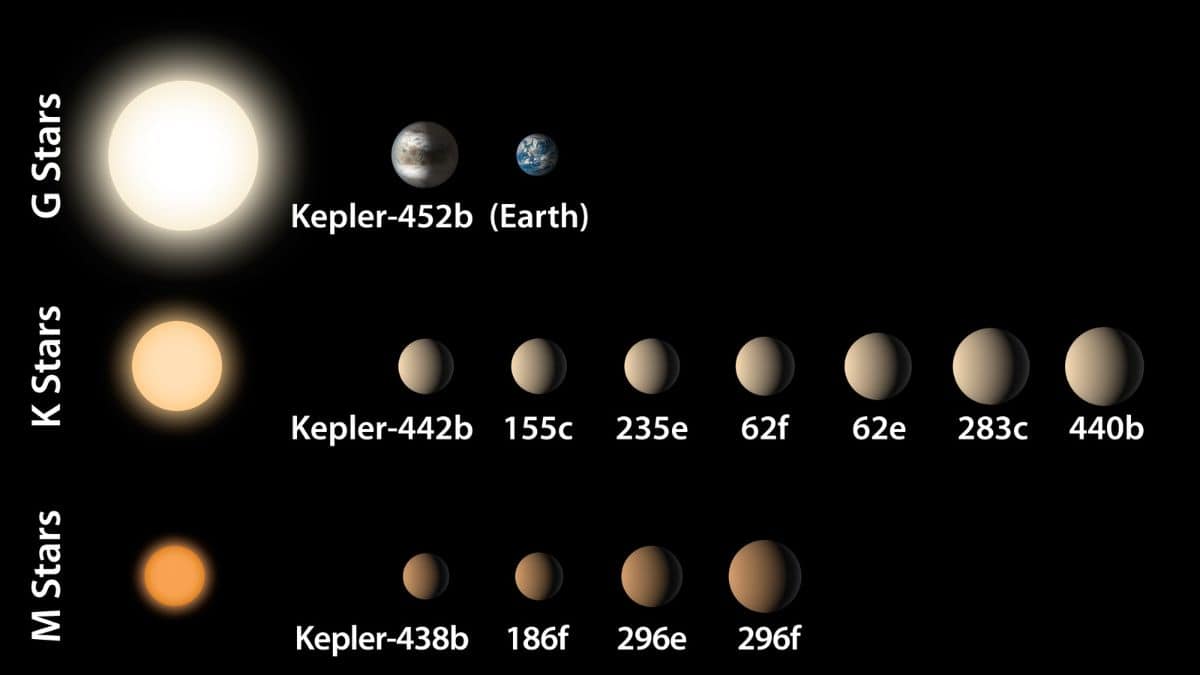Here is the list of earth-like planets found by NASA so far

Kepler-186f
In 2014, NASA’s Kepler Space Telescope found the first planet the size of Earth in another star’s habitable zone. The planet, called Kepler-186f, is in the constellation Cygnus, which is about 500 light-years from Earth. In the search for life, Kepler-186f is an important place. McTier has already looked at how eccentric Kepler-186f’s orbit is to find out if the planet could be habitable. “Even if it spends part of the year in the habitable zone, Kepler-186f would have big changes in temperature if its orbit is too eccentric,” McTier said. “But in my research, I found that Kepler-186f’s eccentricity is pretty close to zero. It doesn’t have big changes in temperature, which makes it more likely that people could live there.
Kepler-452b
NASA thinks that the exoplanet Kepler-452b and the star that it orbits are the most similar to Earth and the Sun so far. Even though it is 60% bigger than Earth, Kepler-452b is thought to be made of rocks and to be in the habitable zone of a G-type star like ours.
K2-72e
K2-72e is a confirmed exoplanet that orbits the red dwarf star K2-72. It is likely made of rock and is in the habitable zone of the star. It is the most distant of four planets found in the system by NASA’s Kepler spacecraft during its “Second Light” mission. It is about 217.1 light-years away from Earth (66.56 parsecs, or about 2.05381015 km), in the constellation Aquarius. The transit method was used to find the exoplanet. This method measures how much a planet dims its star as it moves in front of it.
Kepler-1649c
Kepler-1649c is an Earth-sized exoplanet that is likely made of rocks. It orbits the red dwarf star Kepler-1649 in the habitable zone. It is the most distant planet in the system that Kepler’s space telescope found. It is in the constellation Cygnus, about 301 light-years (92 per cent) away from Earth. Kepler-1649c orbits its star at a distance of 0.0649 AU (9.71 million km; 6.03 million mi), which is about 19.53 days. It has a mass that is 1.2 times that of Earth and a radius that is about 1.02 times that of Earth. Based on its mass and size, it is likely a terrestrial planet.
Kepler-442b
Kepler-442b is a confirmed near-Earth-sized exoplanet that is likely made of rocks and orbits a K-type main-sequence star in the habitable zone. Kepler-442, in the constellation Lyra, about 1,206 light-years (370 pc) away from Earth.
The planet orbits its host star at a distance of about 0.409 AU (61.2 million km; 38.0 million mi), which is about 112.3 days. It is about 1.34 times the size of Earth and has a mass of about 2.3 times that of Earth. It is one of the more promising places to live because its parent star is at least 40% less massive than the Sun. This means that it can live for about 30 billion years. The NASA Kepler spacecraft found the planet by using the transit method, which measures how much a planet dims its star as it moves in front of it. On January 6, 2015, NASA confirmed the existence of the extrasolar planet.


